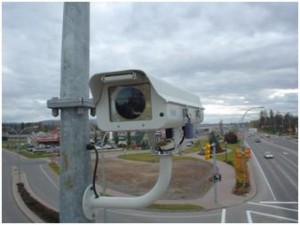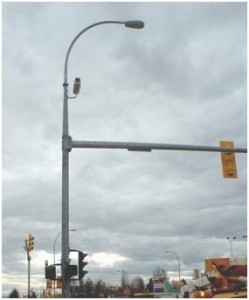
Since launching DriveBC in 2005, BC HighwayCams have quickly become the website’s most popular resource for catching up-to-the-minute road conditions. Their fast rising popularity demonstrated there’s a big desire to “know before you go,” whether you’re a commercial driver carrying an important load or a passenger with a checklist of roadside attractions. We listened to your feedback and responded by covering more ground.
We’re still listening. After all, the webcam network continues to grow, and road safety improves along with it.
So, how do we choose where to install webcams? There are five main factors we take into account when deciding where to plant a new eye in the sky.
1. High Use Routes
Where there are many vehicles, there is high demand for safety measures like BC HighwayCams. It only makes sense to focus on the roads that experience the most traffic; that way, we’re able to service a greater number of drivers per webcam. Commuters and commercial traffic drivers, for example, can monitor their “go-to” webcams regularly as a reliable source of traffic information.
for safety measures like BC HighwayCams. It only makes sense to focus on the roads that experience the most traffic; that way, we’re able to service a greater number of drivers per webcam. Commuters and commercial traffic drivers, for example, can monitor their “go-to” webcams regularly as a reliable source of traffic information.
2. Areas Prone to Extreme or Unpredictable Weather
Locations that experience rapid weather changes, such as high pass areas like the Coquihalla, often demand more regular surveillance to notify drivers of incoming weather systems. More webcams covering greater ground capture incoming fog, sleet and snow as quickly as possible, helping drivers and maintenance crews react accordingly.
3. Areas With Gaps in Coverage
Think of the BC HighwayCams network as a line of defence against unknown road conditions. The growing legion of webcams is meant to strengthen coverage and close gaps in the line, meaning routes or areas that have long distances between cameras are considered closely for new webcams.
However, it’s important to keep in mind that webcams don’t work alone – they rely on adequate power sources, cellular communications and poles on which to perch. When choosing a webcam location, it’s preferable that these are already in place.
4. Areas Prone to Congestion
We know that an open road is a welcomed sight for drivers, especially along popular routes at peak times. We also know drivers appreciate a heads up when roads are congested. By knowing about a congested area, drivers can make informed decisions like picking a different route or postponing their trip until traffic lightens, both of which make our roads safer.
5. Feedback From Public & Stakeholders
DriveBC and district staff receive many recommendations from local citizens and commercial drivers, and we make sure your requests are taken into account when planning new BC HighwayCam locations. After all, the webcams are there as a tool to help you make informed decisions before hitting the highways.
So, where do you want to see our next webcams? Let us know in the comments section below. And for more information about BC HighwayCams, check these out:
> 14 Reasons to Make DriveBC Your First Vacation Destination
Join the discussion